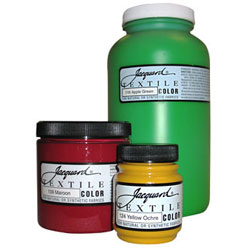 Yesterday I have been tutoring workshop for silk painting. We had a lot of fun creating red cats and lorikeets.
Yesterday I have been tutoring workshop for silk painting. We had a lot of fun creating red cats and lorikeets.
In this project we have used the Serti technique. SERTI (French for “fence” or “enclosing”) is the silk painting technique where designs are formed with gutta (resist) which is applied to silk. Once the gutta has dried, it acts as a barrier for the paint—keeping the color within the outlined areas of the design and allowing you to achieve sharply defined borders.
In this post I am going to go through the process step by step, starting from stretching the silk on stretcher bars and finishing by ironing to fix colours.
List of Materials
White pure Silk Habotai 10mm http://www.silksational.com.au/products/Hab-10-mm-114-cm-wide.html
Frame to stretch piece of silk and suspend it off the table. Artist’s canvas stretcher bars work very well and are sold at most art supply stores. Your frame needs to be soft enough to allow push pins to be pushed into it.
 \
\
Silk paints (silk could be ironed to fix paints). http://www.silksational.com.au/categories/Dyes-and-paints/-H-Dupont-Arasilk/?sort=featured&page=2

Gutta http://www.silksational.com.au/products/Dupont-gutta-100ml-Black.html

Silk Salt

Brushes and mixing plates.


How it’s Done:
Prewash Your Silk
Pre-wash your silk by hand. Rinse, dry and, when still slightly damp, press with an iron set to the silk setting.
Prepare Your Design
The Serti Technique lends itself well to designs with enclosed areas where the color will be contained within the resist lines. Draw your design to scale on a piece of paper, this will be your template.

Lay your silk on top of the template and with a pencil lightly draw your design onto the silk. With thick silks you may have to draw free hand but having your template will still help.
Making a Stretching Frame
You will need a frame to stretch your silk and suspend it off the table. Stretch your silk onto your frame with pins.The goal when stretching your silk is to create just enough tension so that the silk remains taut while you are painting but not so tight that it tears. Your piece may sag a bit once it becomes wet with dye or paint so you may need to adjust the pinning as you are painting. Placing upside down plastic cups or wood blocks underneath each corner of your frame will raise your frame a few inches above your table so that the silk does not have anything touching it.
Apply the Gutta or Resist
Fill your applicator bottle with resist and make sure the tip is on properly. Hold the applicator bottle vertically with the tip touching the silk. Using even pressure and a steady hand, draw your resist lines. Be sure there are no breaks or gaps in the lines, or dye will escape. Also check the back side of your piece to make sure the resist has penetrated all the way through. If it hasn’t, dye can bleed under your resist lines so you will need to apply resist to the back side as well (this is more often necessary when working on silks heavier than 12 mm). Let the resist dry before painting.

Apply Your Paints
Dip your brush into the colour and apply the paint sparingly to the center of an outlined area by touching the brush to the silk. Let the paint move to the resist line – do not apply the paint too close to the resist as water-based resist may begin to dissolve if the line becomes too saturated. If there is a gap in your resist line that you didn’t notice and the paint starts escaping, you can stop the movement by drying it quickly with a hair dryer and then patch up the line with gutta and let dry before resuming. When painting large areas such as backgrounds, work quickly, applying wet to wet to avoid unwanted lines.

Before the background dried I like to spread some table salt over it. I personally like to use salt because it produces such an interesting rainy or snow flake like texture to the background. Note, silk has to be just painted and wet for salt to work.


Fix the colour
Allow to dry 24 hours before heat-setting the paints with an iron. Iron each area of your piece for 2-3 minutes, face down on your ironing board with a press cloth between the silk and iron. You may want a protective cloth on the ironing board as well. Work in small areas at a time, moving in a small circular motion so as not to burn the silk, but also so that each section retains the heat for a long enough duration to actually set the paint.
If coloured guttas have been used, how in this project, do not dry clean (the colour will come out with the gutta)! They are meant to stay in the silk, and there will be some “hand” or “feel” to the lines in the silk.
Now picture is finished!

I really hope you liked my tutorial! You are more than welcome to leave a comment or ask any question! I will be happy to answer!






